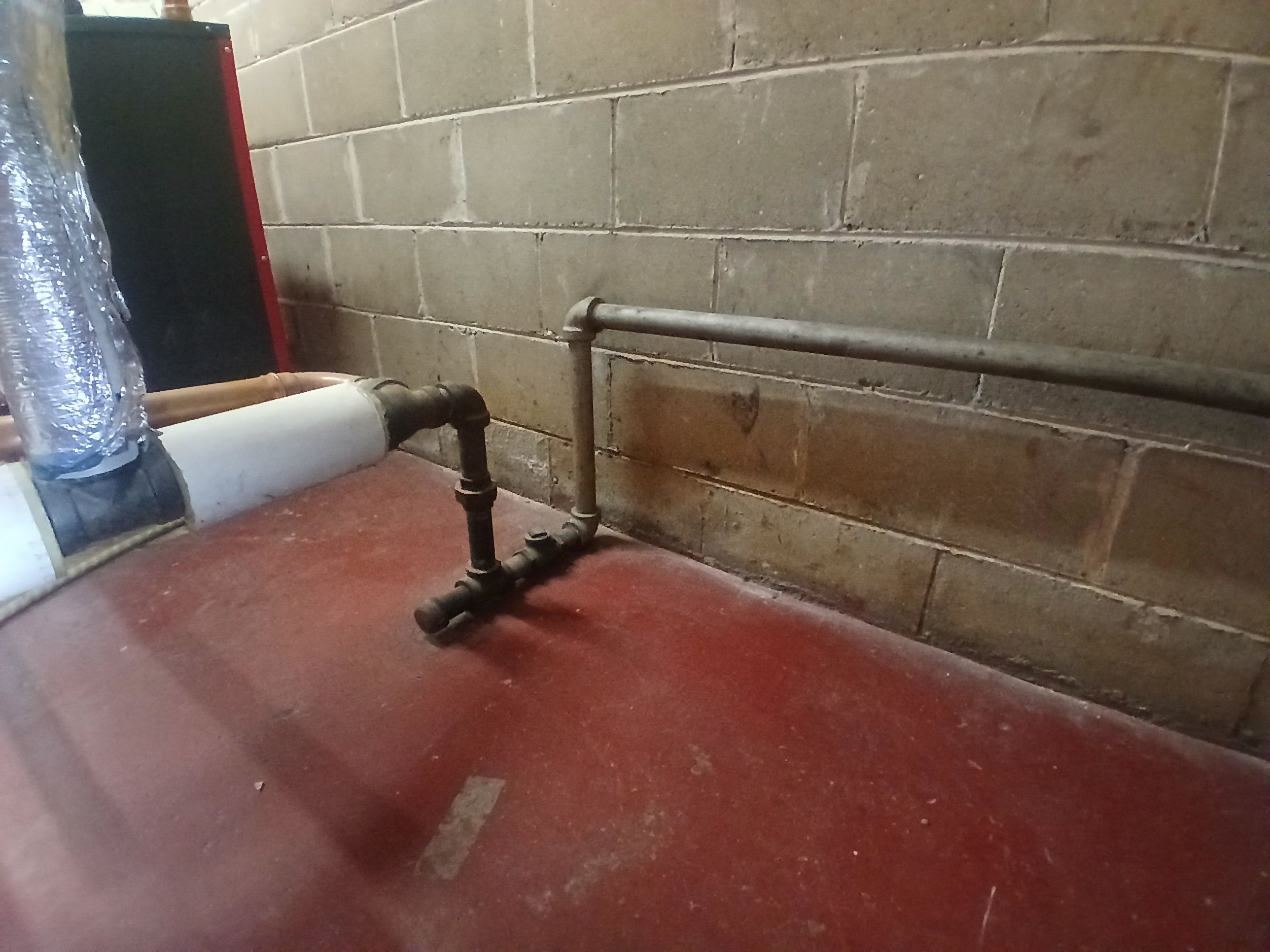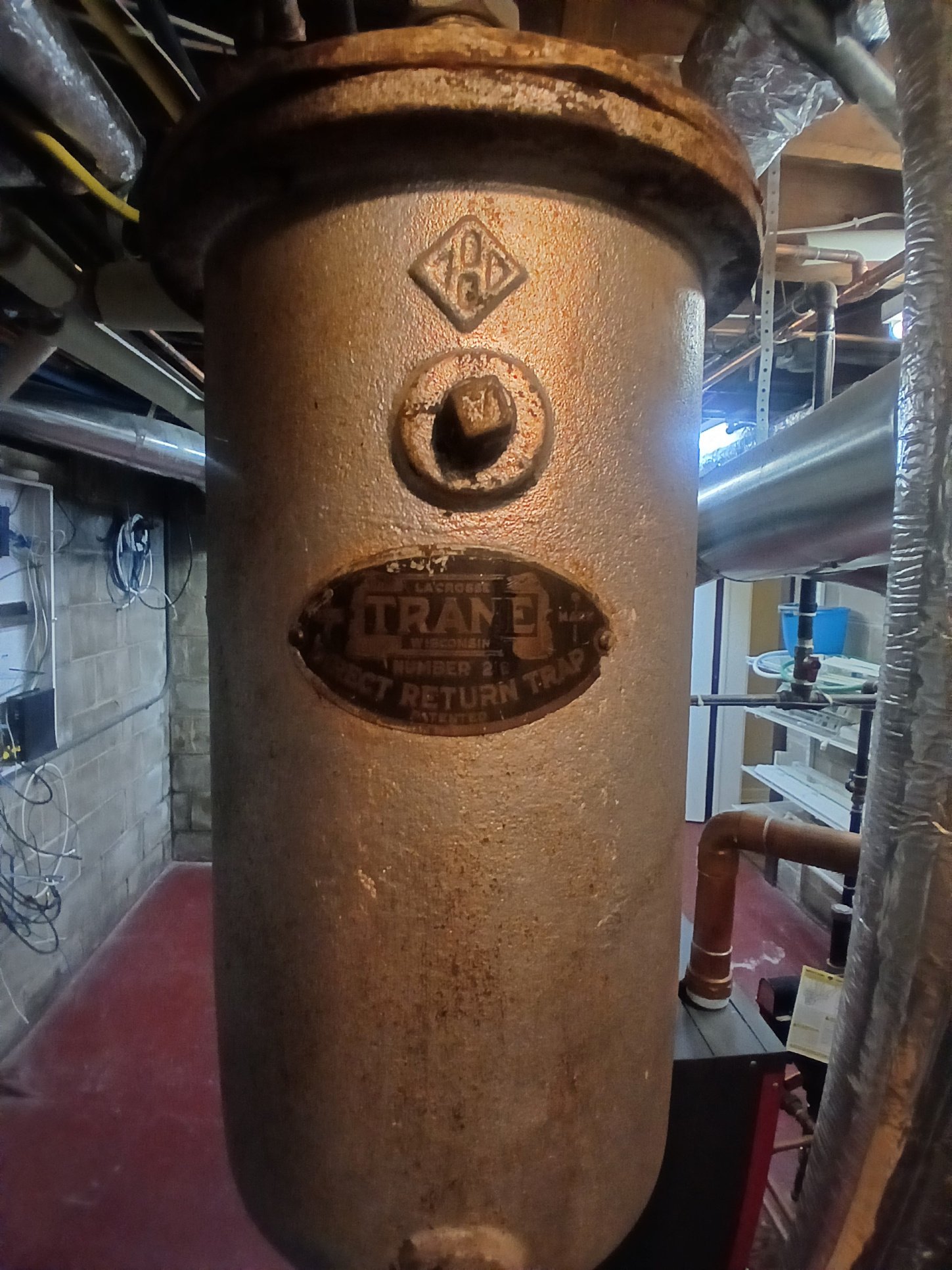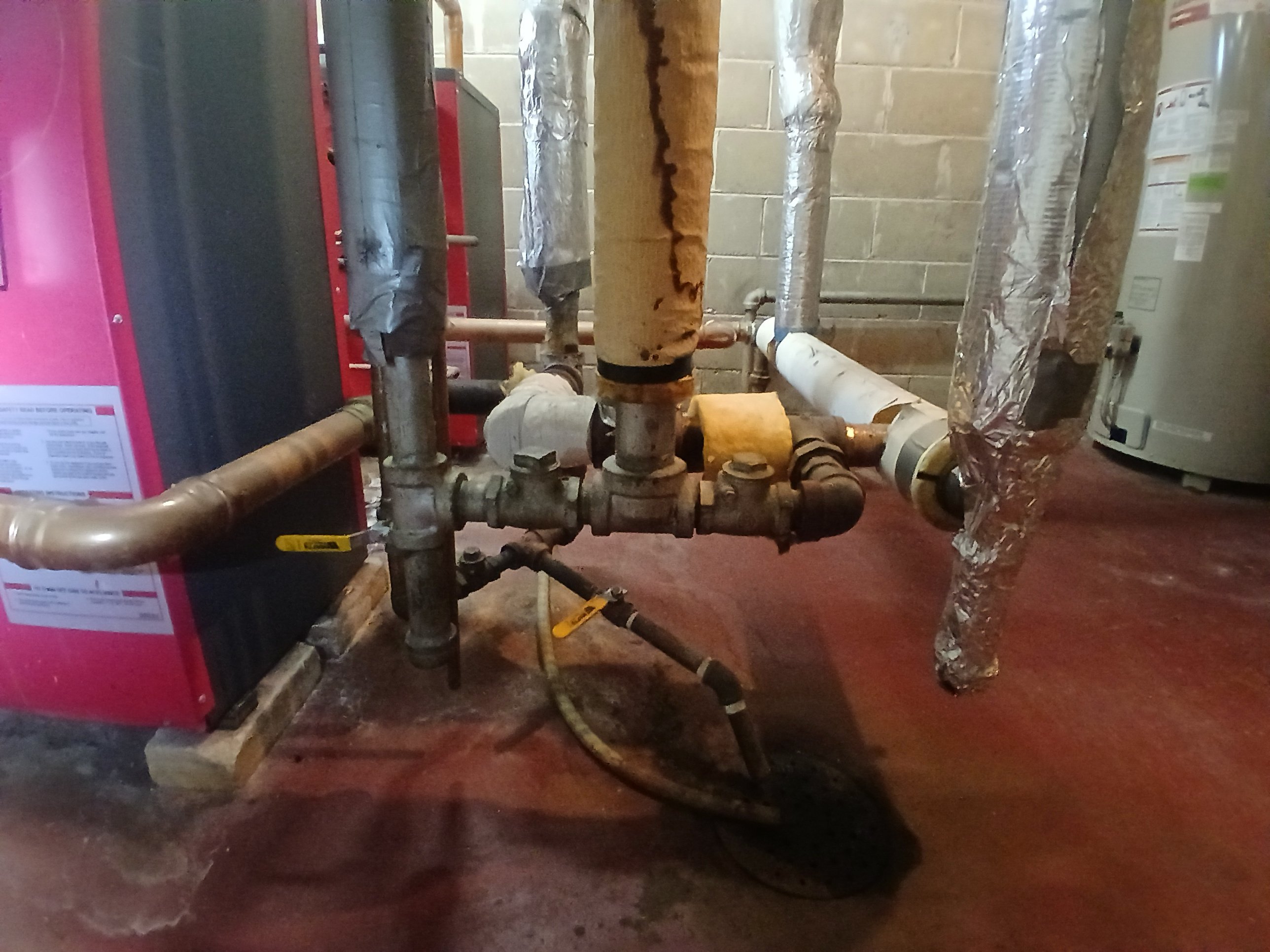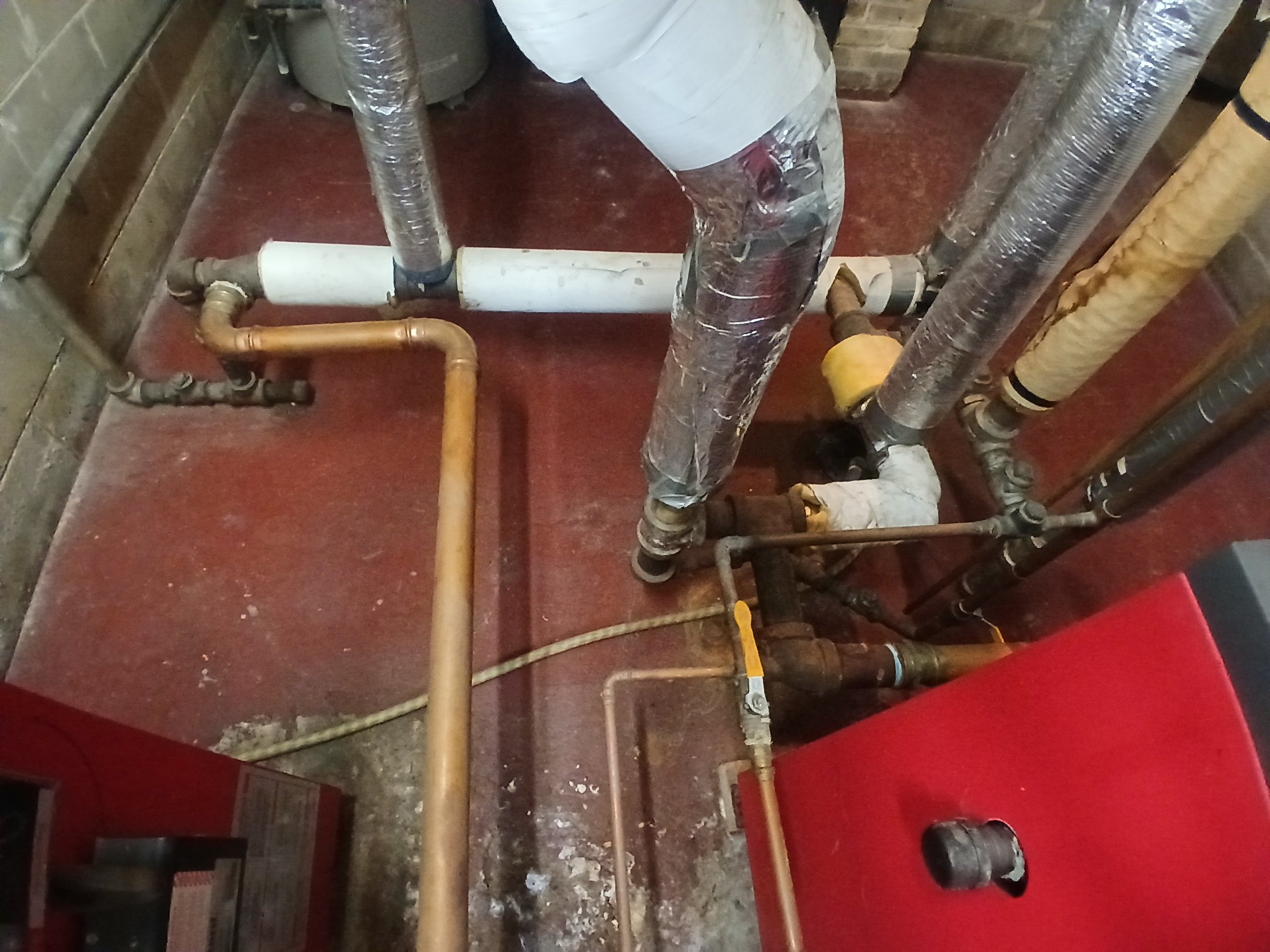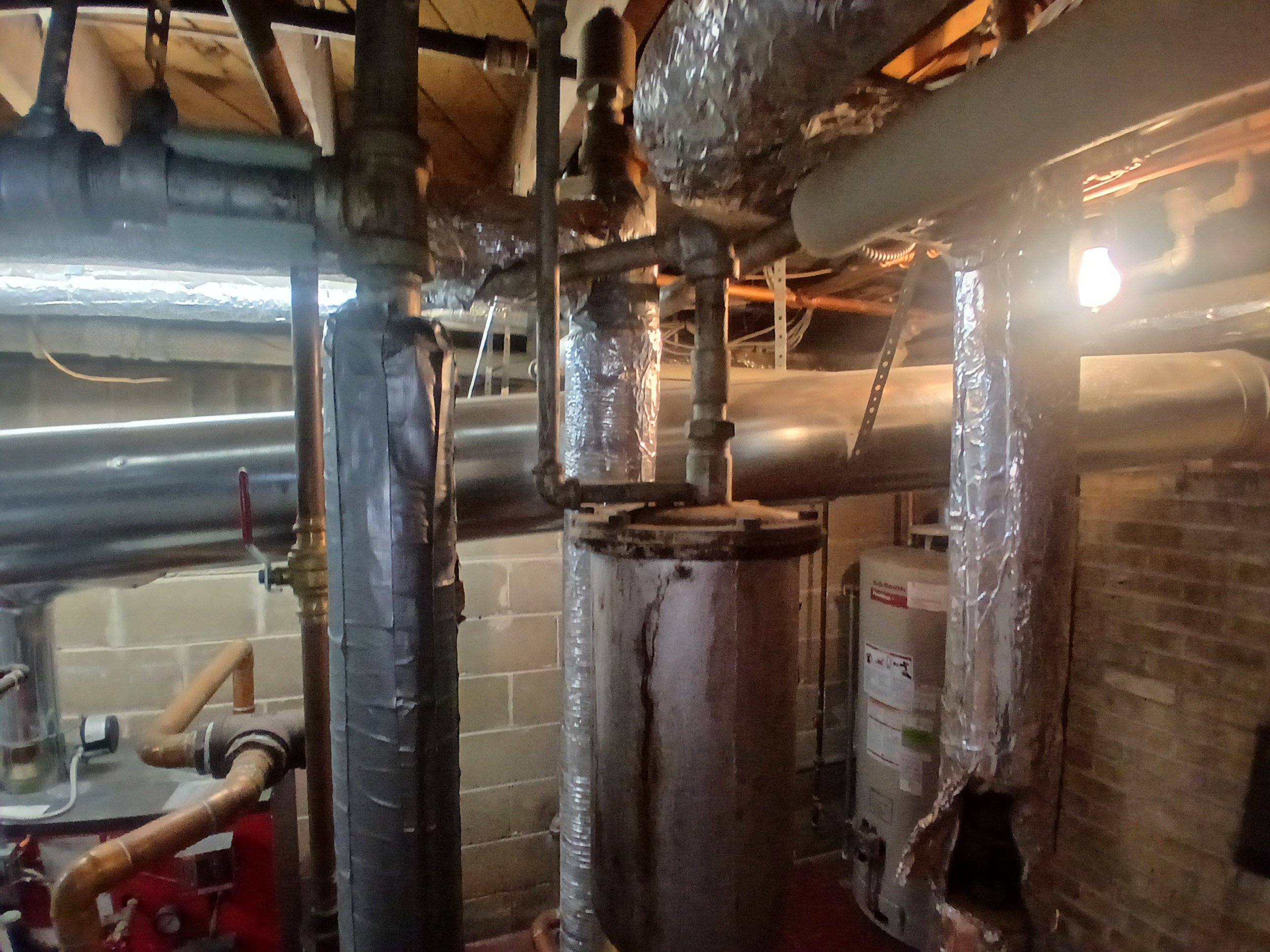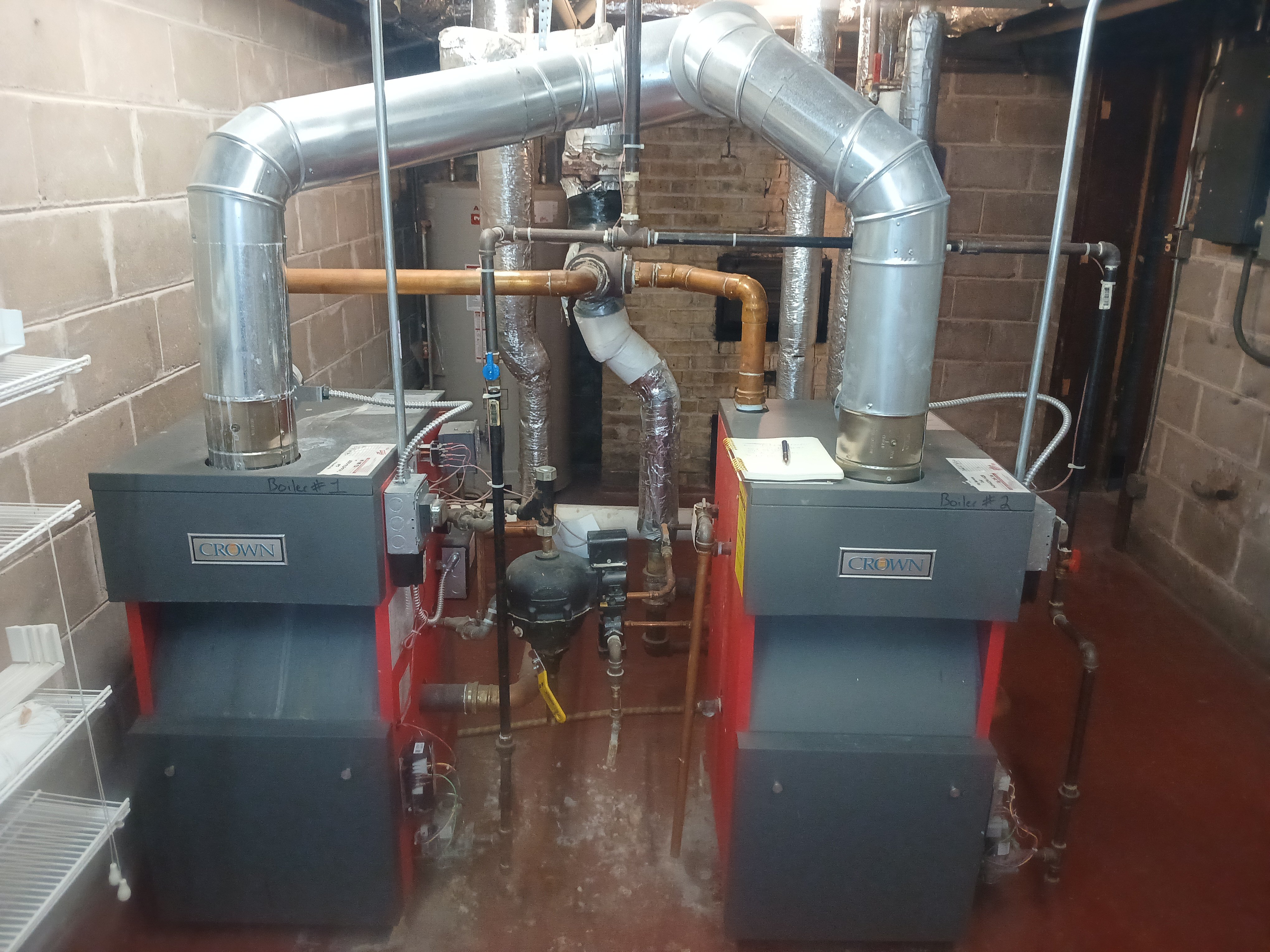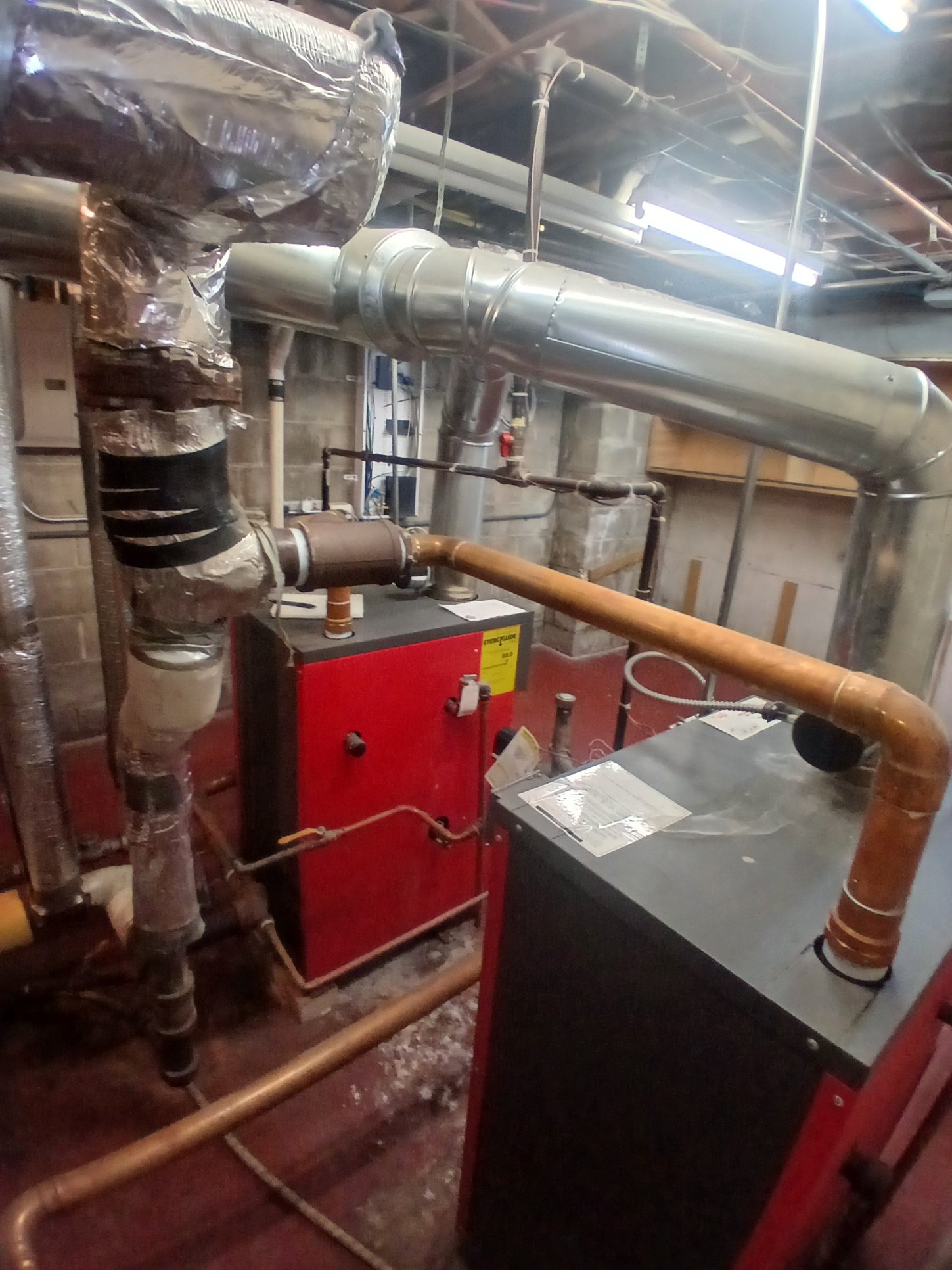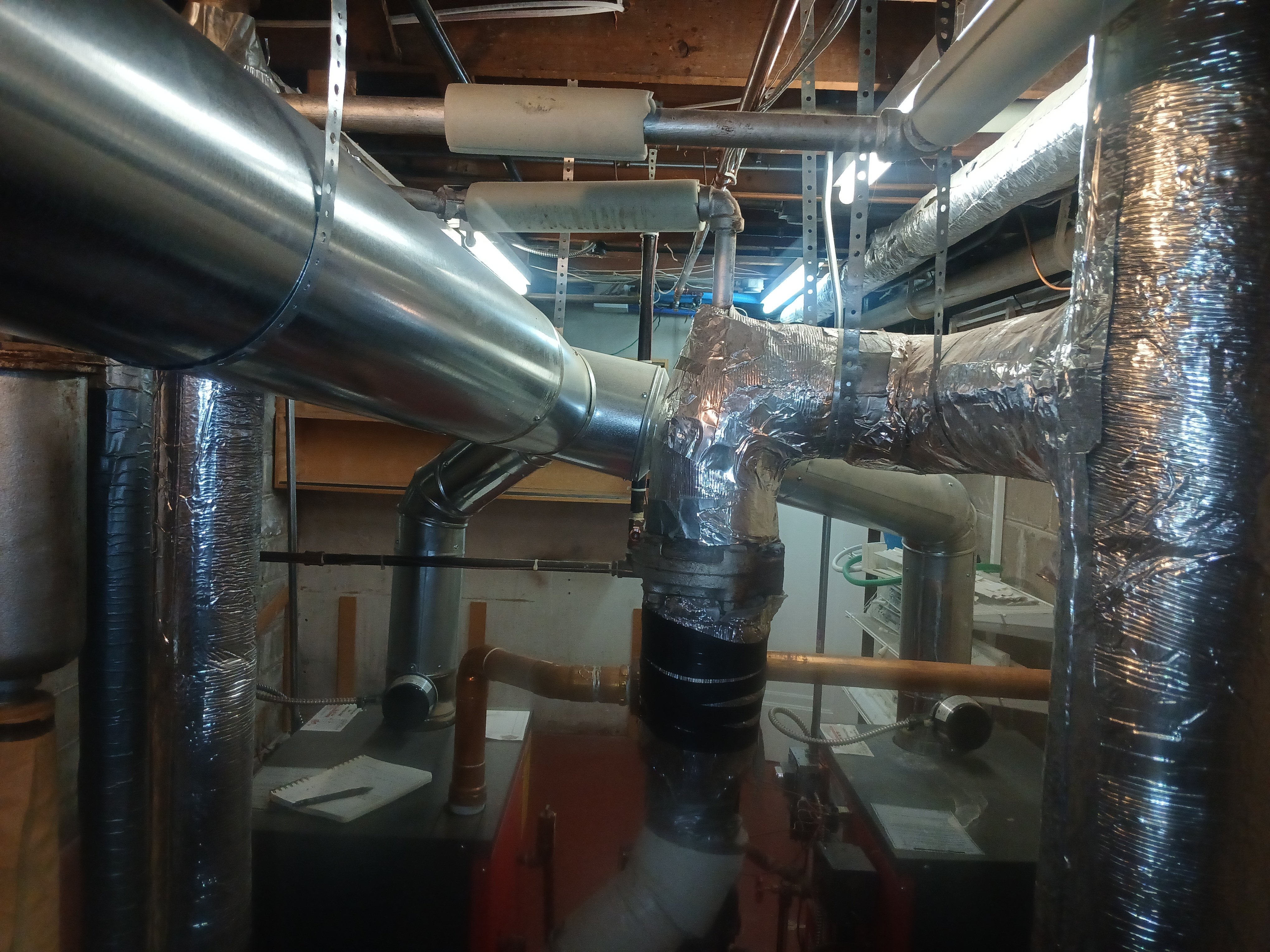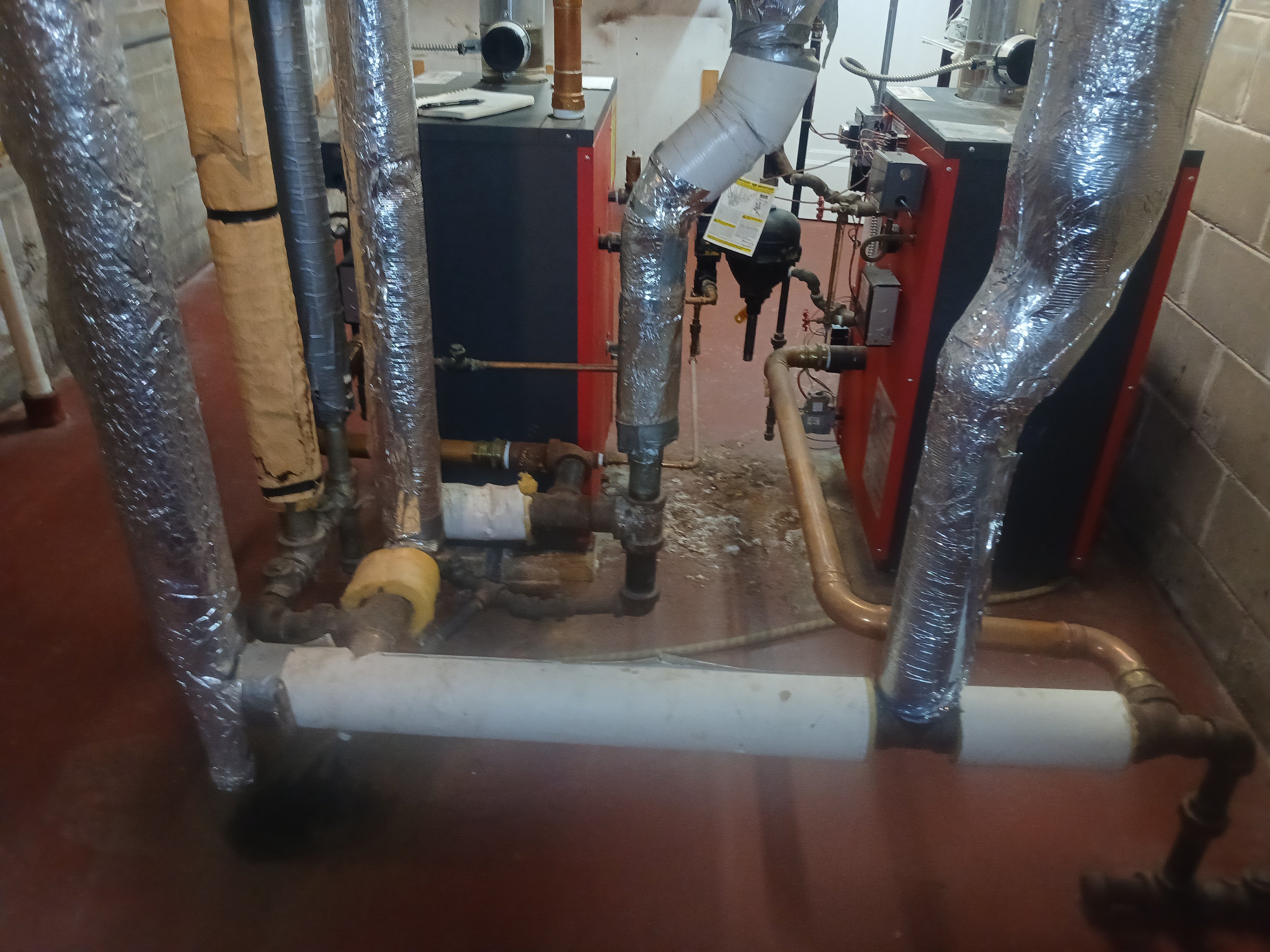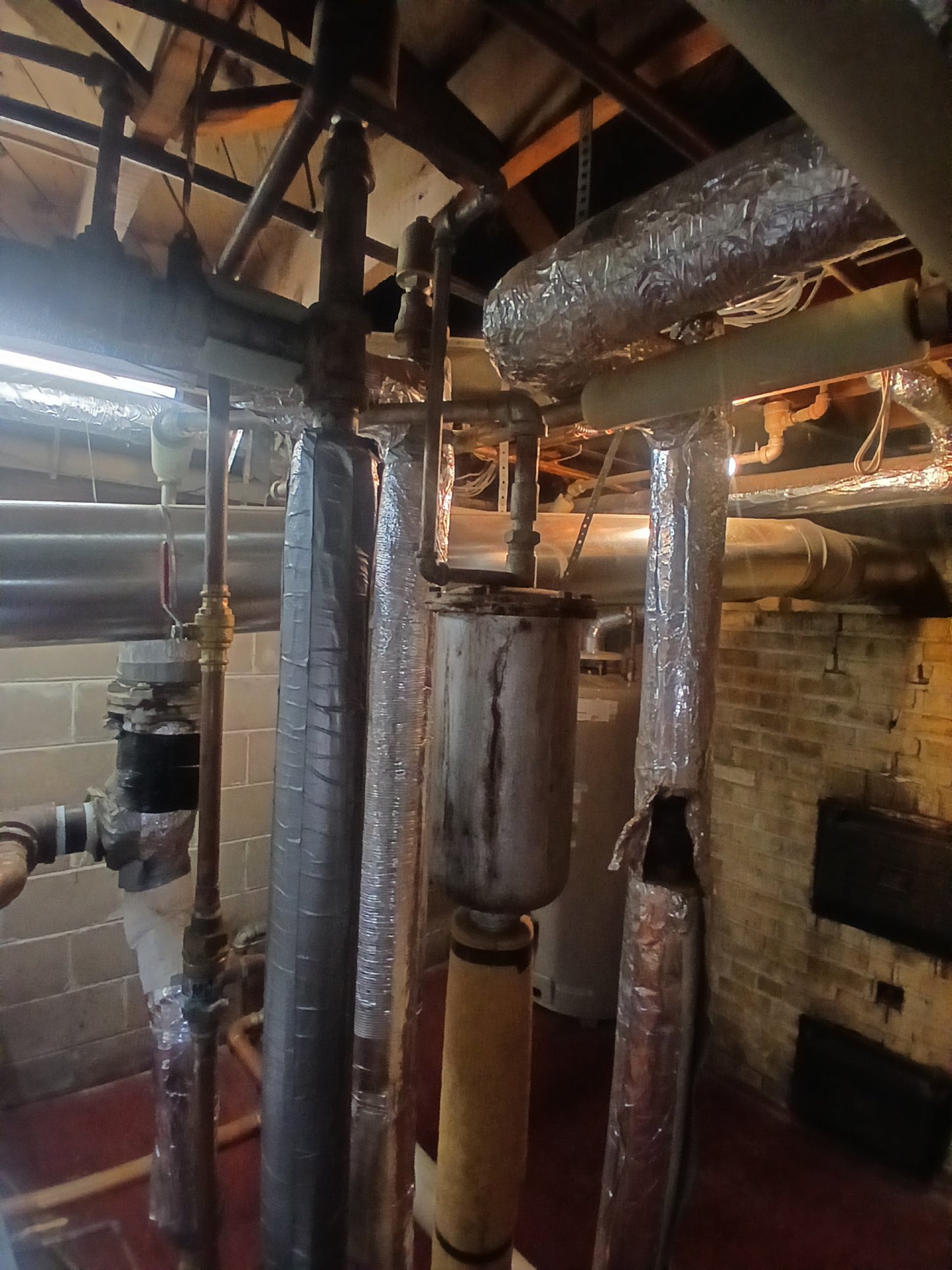Dry or wet return Trying to figure out this nightmare Trane 210 ultimately has me stumped
So I am a little stumped on this…Who ever installed this Frankensteined everything and buggered everything up, cant even tie these two boilers together on a gravity return system- trying to maintain NOWL had to be horrendous … MY question is. I know there are 3 Dry return mains , but one is coming off of one wing of the house that is serving thermostatic traps- it is pitched all the way across the basement from ceiling height to 18" off the floor before which ties into the nasty mess of piping on the return. Basically I'm wondering how to treat this pipe if a new boiler is put in and all this piping goes into a condensate receiver or it to stay as a gravity return. all of the piping and the 2 boilers would go. I would prefer to keep it gravity return. It be replaced with 1 boiler , header with equalizing loop ect. All of the piping up to the steam main would be removed and everything up to the return mains.
It also has a Trane 210 Trap I'm assuming it was used as the A dimension? I believe it was roughly 28" from center of gauge class to center of the 210
Any advice would be great. I'm thinking if I were to remove the 210 and keep the system gravity, I would have to make a false water line on the line that is at 18" going into the return piping.
The first picture is the Return I mentioned at the beginning of the post at 18".
The second and third are of the 210 Trane Trap and the piping/ check valves it is tied into
Thank you
Comments
-
Also I don't believe there is an F/T trap anywhere on that return line that drops to 18" I'm also not sure if it would even need one being that it drops that low? I know you would need one if it would drop into a tank above the NOWL, correct me if I'm wrong. I NEED the right info so I know in the future. Thanks again
0 -
I'd suggest @Steamhead to comment on the Trane trap.
But in the meantime…
Back to basics. In any two pipe system, there are steam mains — which are usually pretty obvious. There are radiators. These always have some means of keeping steam out of the outlet, while allowing air and condensate to pass. That means may be an orifice or adjustable inlet valve, or it might be a standard radiator trap, or it might be any one of a variety of patented widgets. The outlet then is connected to a dry return, which is often run parallel to the corresponding steam main. Commonly the steam main is connected to the dry return at the extreme end with a crossover trap — which is commonly just a large radiator thermostatic trap located above the steam main with the outlet dropping to the dry return, although some applications use an F&T trap instead. The F&T arrangement works well enough, provided the pressure differential between the steam main and the dry return is great enough to lift the condensate to the dry return. The dry returns are all connected at the boiler, where they are vented to atmosphere. The dry returns and the steam mains must all be above the boiler water line by at least 28 inches for every pound of pressure the system runs at. The dry returns vent the air from the radiators (and sometimes the steam mains) and conduct condensate to a handy low point.
Condensate is handled in a variety of ways, but the basic idea is that both the steam mains and the dry returns will either pitch slightly towards or away from the boiler, and at the low points they will have vertical drips to floor level where they enter a wet return — which must be below the boiler water line.
That's the basics. Now many systems had various devices at or near the boiler to prevent the pressure differential between the boiler and steam mains on the one hand and the dry returns on the other from increasing above a design level — often considerably less than one prig.
Now. That one pipe you show which drops to 18 inches may still work as a dry return/vent line — but only if it is going into a vented condensate receiver tank.
Further, whatever the piping arrangement is, you still need functioning traps to keep steam from ever getting into the dry returns and either traps or orifices or flow control valves on the radiators.
Anyway… back to basics. How does steam get to the radiators? What keeps it from getting out? How does air get out of the radiators and steam mains? And how does condensate get back to the boiler? Start there…
Br. Jamie, osb
Building superintendent/caretaker, 7200 sq. ft. historic house museum with dependencies in New England0 -
-
don't Frankenstein it more, figure out the proper way to hook in to the Trane specialties. Do the radiators still have the vapor valves? If someone has knucleheaded those you will have to add orifice plates or convert it to a regular 2 pipe steam system with traps.
0 -
Here is a Trane bulletin that shows a piping diagram:
All Steamed Up, Inc.
Towson, MD, USA
Steam, Vapor & Hot-Water Heating Specialists
Oil & Gas Burner Service
Consulting1 -
Thank you for the response. And for the link, I looked over everything and I think i have a plan. I'm still a bit confused on the line that drops below the return what to do with it. I guess that's my main concern at this point… Since its just a drip line how to treat it…
0 -
If you are absolutely certain that it carries only condensate and NO AIR you can drop it right to the floor. HOWEVER if it carries any air — vents anything at all — bring it up to the overhead (but with pitch toward the boiler), put a vent on it and then drop it straight down.
Br. Jamie, osb
Building superintendent/caretaker, 7200 sq. ft. historic house museum with dependencies in New England0
Categories
- All Categories
- 87.3K THE MAIN WALL
- 3.2K A-C, Heat Pumps & Refrigeration
- 61 Biomass
- 428 Carbon Monoxide Awareness
- 120 Chimneys & Flues
- 2.1K Domestic Hot Water
- 5.8K Gas Heating
- 114 Geothermal
- 166 Indoor-Air Quality
- 3.7K Oil Heating
- 77 Pipe Deterioration
- 1K Plumbing
- 6.5K Radiant Heating
- 395 Solar
- 15.7K Strictly Steam
- 3.4K Thermostats and Controls
- 56 Water Quality
- 51 Industry Classes
- 50 Job Opportunities
- 18 Recall Announcements
